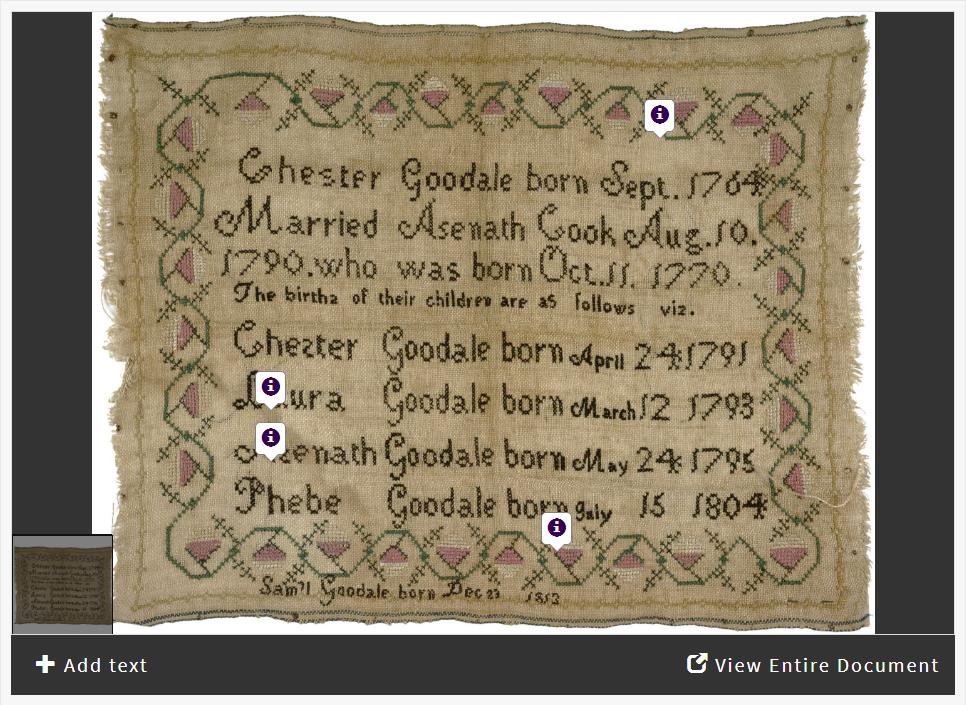In this activity, students will explore a sampler (needlework) for historical evidence and determine if the creator was an historian.
Suggested Teaching Instructions
Students will explore the sampler and use the interpretation tools in the activity to analyze specific details. Because the featured document highlights the Goodale Family's history, this activity is suited for a genealogy or family history unit; but it also fits in a lesson about using artifacts as historical evidence. For grades 5-12. Approximate time needed is 15 minutes.
Direct pairs of students to begin the activity, explaining simply that they will look at an interesting document and answer questions about it. Do not tell them what the document is; and ask that, as they analyze and discuss their theories, they do not share their conclusions with the rest of the class.
Students should click on the guiding questions embedded on the sampler:
- What information can you gather from studying this piece of needlework? The sampler records the family information of the Goodale family including birth/death dates and the marriage date of Chester and Asenath. The sampler can also been seen as a decorative piece.
- Chester Goodale's full birth date is omitted. Is it possible that it was not known by the creator? Yes, it is quite possible that the creator of the sampler did not know the exact birth date for Chester. Many people did not know their actual day of birth, but only knew what time of year they were born within a certain year.
- In several places the letter "s" is backwards. Do you think the creator was learning to write? There are spelling inconsistencies within the document. Do you think the creator was learning to read? At the time this sampler was created, formal education was not readily available for those who were not of the higher classes, especially for females. Samplers provided young girls a way to practice reading and writing, while at the same time perfecting the much needed skill of needlecraft.
- A name was stitched outside the border at the bottom of the sampler. Why do you think this name was included here? More than likely, Samuel was born after the sampler had been completed, and was added at the bottom in order to be included in the family record.
As directed in the activity, students will then complete the "Consider the Source" questions, including:
- How do you think this data was collected? More than likely, the data was collected by the creator interviewing family members.
- Who do you think created the document? The document is a sampler created by Laura Goodale in 1809 when she was 16 years old.
- Why do you think the document was created? More than likely, the sampler was created to record the Goodale family history and for the creator to practice her reading and writing. The sampler was later used in 1840, as evidence to prove that Asenath was married to Chester Goodale, when she applied to receive a widow's pension for his service during the Revolutionary War. Asenath received a pension of $50 a month.
When students have finished, clicking "When You're Done" will reveal the document's origin and use. They will be asked:
- Would you consider Laura Goodale to be an historian? Why or why not?
- Does this new information change your understanding of Laura's sampler?
Follow up with a class discussion about what makes someone an historian and the different types of historical evidence available to historians.
Optional extension: Begin a discussion about the types of records that families keep in order to document family history. Ask students to make a list of documents they might be able to use to glean information about their own family history.





